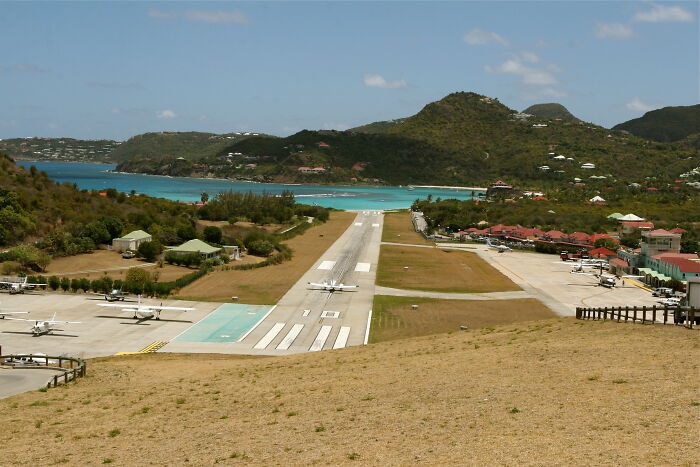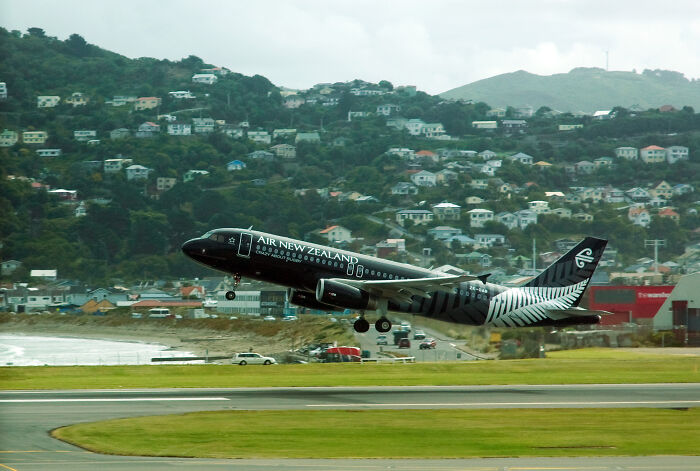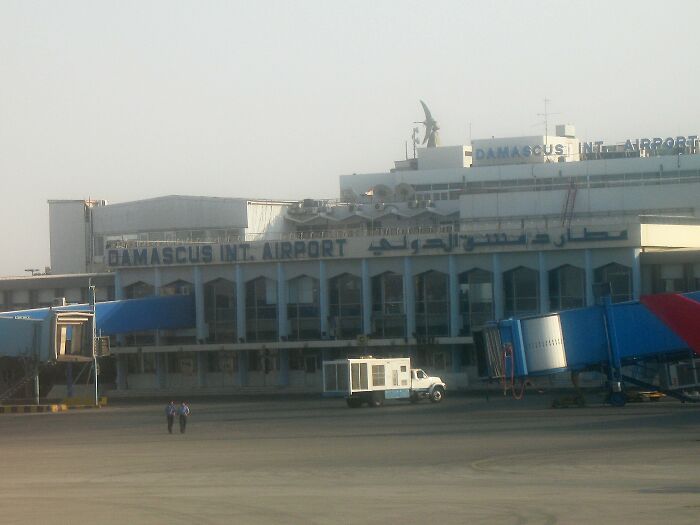Unarguably, our planet Earth is full of beautiful places. However, most of those really stunning places are often very remote and situated in places that make them very hard to reach. Usually, you can only reach them by boat, or more realistically - with an airplane. Now, since those beautiful places are so remote and the terrain there is often, well, unique, some accommodations have to be made to build an airport there to safely land its visitors. ‘Safely’ being the operative word here. Alas, we all understand safety in our own terms, and the builders of the most dangerous airports in the world that we’ve rounded up in this list had their own idea of ‘safe’ too. Well, at least we get to see the stunning places they are built on, right?
So, what makes an airport the most dangerous airport in the world? Well, there’s one obvious thing - a very short runway. If your regular runway is anywhere between 2 to 4 kilometers long, then some of the world’s most dangerous airports have runways of about… half a kilometer! Imagine how abrupt and unpleasant the landing would be! Other, less obvious reasons why these are the most dangerous airports might include the fact that they are located in very high altitudes among huge mountains, the runways literally end in an ocean, or because of the harsh and windy weather conditions that are always there. Either way, these most dangerous airports to land in are definitely not for the faint-hearted!
Right, so, ready to take a look at the most dangerous landing strips in the world? If so, scroll down below, read the short descriptions of each of these terrifying airports, and plan your future travels accordingly!
This post may include affiliate links.
Matekane Air Strip, Lesotho
The tiny, 1,300-foot-long airstrip in Lesotho, Africa, has been dubbed the world's most terrifying runway. Because the planes don't have enough time to begin flying when they take off from Matekane, they must first drop off of a 2,000-foot cliff to actually fly!
Gibraltar International Airport, Gibraltar
North Front Airport, also known as the Gibraltar International Airport, is very dangerous because its runway passes through a street! And not some street, but the busiest avenue on the island. Now, if railroad crossings make you nervous, then think about an airplane crossing. Terrifying!
Lukla Airport, Nepal
Tenzing-Hillary Airport, formerly known as the Lukla Airport, in Khumbu, Nepal, is often used by people visiting Mount Everest. The airport is set at an altitude of 8,000 feet with very short landing and take-off strips and virtually no modern air traffic control features. A real test of any pilot's abilities!
Kai Tak Airport, Hong Kong
Before Hong Kong opened the Hong Kong International Airport in 1998, Kai Tak served as the primary airport. It had a perilous landing, it was constantly windy and located amidst mountains. Scary!
The landing approach for Kai Tak’s runway 13 had planes flying extremely low over Kowloon city and was known as the “Kai Tak heart attack”. There a plenty of photos and videos on the internet showing what landing at Kai Tak was like from the ground and they’re cool to look at, but terrifying to think about.
Juancho E. Yrausquin Airport, Saba
Juancho E. Yrausquin Airport is an airport on the Dutch Caribbean island of Saba. The runway here is only 400 meters long, with hills on one side, and the ocean on another. So, if you're interested in visiting a paradise island and getting an adrenaline rush from flying here, Saba is your go-to place.
Gustaf III Airport, Caribbean
It's difficult to picture difficult air travel conditions in a place so exquisite given that it's situated on famous Saint Barthelemy (also known as St. Barts). Just over 640 meters long, the runway for landing ends right before the turquoise waters that are the hallmark of this idyllic sanctuary.
Courchevel Airport, France
The Courchevel Airport in France has one of the shortest runways in the world. They come at only a bit more than half a kilometer! In comparison, a typical runway is usually anywhere from two to four kilometers. Besides all that, the landing strip is also located amidst mountains which doesn't make it any easier to land or take-off.
Agatti Aerodrome, Lakshadweep, India
The Agati Airport in Lakshwadeep, India, is the only airport serving 36 Insiand tourist islands. And although the views there are breathtaking, the strip itself is only 4,000 feet long which makes any landing and take-off into extreme sports.
Anyone interesting in offbeat destinations in India should go to Lakswadeep and also Andaman and Nicobar
Gisborne Airport, New Zealand
Gisborne Airport offers passengers a truly special experience because a railroad crosses the airstrip directly. Given that both parties are in operation during the day, proper scheduling is essential to preventing disaster from occurring at this airport.
Princess Juliana International Airport, Saint Martin
Saint Martin's main airport, The Princess Juliana International Airport, is one to test any pilot (and the guts of the craft's passengers!). Before landing, planes fly over a beach and some roads almost touching them, only to arrive at a very short landing strip which makes for a very uncomfortable abrupt landing.
Toncontin International Airport, Honduras
Toncontín International Airport, also known as Teniente Coronel Hernán Acosta Mejía Airport, is in Tegucigalpa, Honduras, and serves both as a civil and military airport. The difficulty here lies in the fact that the airport is located in a very mountainous region, and the pilot has to make certain arrangements so as to not hit the mountains!
My brother spent a year in the military at this airport as an air traffic controller. He said he'll never forget it. The pilots have to pretty much drop down and land, and to take off they accelerate for like .5 seconds and just lift up. It's scary to see.
Santos Dumont Airport, Brazil
The second-largest airport in Rio de Janeiro, Brazil, is located here, and it is encircled by an abundance of azure ocean. Although it may be a beautiful sight to fly over, the runway is relatively little for landing, which greatly increases the likelihood of landing in these Brazilian bays.
Narsarsuaq Airport, Greenland
The Narsarsuaq Airport is a stunning sight to view from the air and is a strong contender for one of the most difficult plane landings to make at an airport. When worrying about ice-covered runways and bone-chilling winds, you'll have great fjords to wonder at and stunning landscapes to enjoy.
Telluride Regional Airport, Colorado, USA
A landing at Telluride Regional Airport can be a frightening event because of the airport's high elevation and cliffs that hang precariously in the air. You'll have a breathtaking view to think about as you fight the ferociously strong unstable wind conditions of this region while landing smack in the breathtaking scenery of the San Juan Mountains.
Catalina Airport, California
Pilots arriving at Catalina Airport must be cautious of the steep drop at both ends of the runway because it is carved into the adjacent hills of Avalon. Because of the airport's elevation, pilots frequently have to prepare for severe turbulence on a runway that frequently has soft areas and potholes.
Barra International Airport, Scotland
Situated at the tip of Scotland's Barra island, the Barra International Airport has a very short runway that is actually... a beach! It's the only airport to have a runway that is literally a beach instead of tarmac.
Ice Runway, Antarctica
The main runway for the US Antarctic Program is aptly called the Ice Runway. However, it isn't actually a runway at all, as the flights land on a patch of snow and ice!
Svalbard Airport, Norway
Svalbard Airport is the northernmost airport in the world with scheduled flights. The runways here are built directly on permanent ice! However, due to global warming and rising temperatures,, the track will soon be seriously distorted, and the airport will have to be shut down.
Paro Airport, Bhutan
Only a handful of pilots in the entire globe are qualified and certified to stick the landing at Paro Airport! So, be sure to express your gratitude to your pilot after this tense trip, which included a quick 45-degree dip before touching down on the runway with no airport surveillance radar to guide the pilot.
Don Mueang International Airport, Thailand
Although Don Mueang International Airport isn't the sole airport in Bangkok, it is still used frequently. The catch here? Well, it is situated between two golf fields and that requires quite a lot of precision from the pilot.
Kansai International Airport, Japan
Kansai International Airport is an airport located on an artificial island in the middle of Osaka Bay. The island is only 4 kilometers long and 2.5 kilometers wide, which already presents risks for any pilot landing or taking off from this airport. Besides that, the airport might eventually submerge in the ocean water, due to global warming and rising sea levels.
Madeira Airport, Portugal
Cristiano Ronaldo International Airport in Madeira, Portugal, was once a real challenge for pilots to navigate. However, due to Malaga's growing popularity as a travel destination, the airport was gradually expanded. Although it is still quite small, it is no longer a hazardous place to be. Except for the harsh weather of the island, that is, which make any landing and take-off into an extreme sport.
McMurdo Station, Antarctica
McMurdo Station is an airport that is only available to people associated with or employed by the research facilities and is inaccessible to the general public. Flying in this snowy terrain is challenging because of the unpredictable winds that can result from its harsh weather.
Tioman Island Airport, Malaysia
This tropical Malaysian region is a volcanic island with lovely beaches, however, a flight to this beautiful location might be a little unusual! To make sure they stay on plan and land securely on the runway, the pilots undertaking this trip must fly directly to the nearby mountains and make a fast 90-degree turn.
Congonhas Airport, Brazil
The second busiest airport in Brazil, Sao Paulo's Congonhas Airport, has a very slippery runway that has caused quite a few accidents. However, these days the runway is being rebuilt, accounting for the factor, so the Congonhas might not be on this list for much longer.
Wellington International Airport, New Zealand
Formerly known as the Rongotai Airport, Wellington International Airport serves the capital city of New Zealand. It has shorter-than-standard runways, which seem to begin and end in bodies of water!
San Diego International Airport, California, USA
Since the city's central business district is so close to San Diego Airport, landings over tall structures can feel uncomfortably close. Strong winds occasionally occur on flights, which can make the journey difficult.
Damascus International Airport, Syria
While the weather and surrounding environmental elements impact many hazardous airport aspects, this airport also has another threatening reason for its hazardous status. This airport could be a target for terrorist attacks given the ongoing political upheaval, such as the Syrian Civil War. The airport's main runway suffered major damage due to an Israeli bombing in 2022, forcing the closure of the Damascus International Airport for renovations. The second terminal of the airport, which had recently undergone substantial renovations, was also impacted by this attack.
OK, this is a little off topic but Luxembourg International Airport could be on this list due to frequent fog issues. The Germans decided to holiday over parts of Europe in the early 1940s, which included Luxembourg. In 1940 the Germans decided they wanted an airbase in the country and asked the Luxembourgers who told them of an ideal place, which the Germans accepted. Unknown to the Germans the area was renowned for having issues with fog. Roll on a few years and this base became Luxembourg's International airport and unsurprisingly has frequent issues with fog. I used to be a relatively frequent traveller to there between 1995 and 2000. And then in 2002 Luxair Flight 9642 arriving at LUX crashed killing 20 out of the 22 passengers due to fog.
Aspen/Pitkin County Airport, Colorado, USA
The Rocky Mountains airport, situated in a region covered in snow and renowned for its world-class ski resorts and breathtaking beauty, has its share of difficulties for aircraft. You'll be glad to step on the tarmac after a precarious flight due to high altitudes and fast wind change circumstances.
Cleveland Hopkins International, Cleveland, USA
Even if there might not be any particular terrain challenges or dangerous weather conditions, this airport has a history of creating difficult circumstances for the typical flight traveler. Its history of offenses speaks for itself. This includes a $735,000 fine from 2015 for disregarding safety protocols during the snowy weather and previous fines for dangerous runway conditions.
What, no Los Rodeos? That airport is situated on tenerife and is often shrouded in fog.
I was surprised by this too! It's the site of one of the deadliest airplane disasters in the world.
Surprised Hong Kong isn't on here. Pilots have to fly over sky-scrapers then do a right turn at precisely the right moment to line up with the strip. I've done it on a professional simulator and there is very little room for error.
What, no Los Rodeos? That airport is situated on tenerife and is often shrouded in fog.
I was surprised by this too! It's the site of one of the deadliest airplane disasters in the world.
Surprised Hong Kong isn't on here. Pilots have to fly over sky-scrapers then do a right turn at precisely the right moment to line up with the strip. I've done it on a professional simulator and there is very little room for error.

 Dark Mode
Dark Mode 

 No fees, cancel anytime
No fees, cancel anytime 







































































































